Browse using the new Vinous website now. Launch →
Printed by, and for the sole use of . All rights reserved © 2015 Vinous Media
El Molino: The Essence of Napa Valley Classicism
BY ANTONIO GALLONI | NOVEMBER 13, 2025
Despite boasting a history that stretches back to the late 1800s, El Molino remains one of Napa Valley’s most under-the-radar estates. I have only tasted these wines sporadically over the years myself, as the wines are rarely seen. Here, at her family’s historic St. Helena winery, proprietor Lily Oliver Berlin quietly crafts Chardonnays and Pinot Noirs of rare distinction. This vertical of the estate’s Chardonnay and Pinot Noir back to 1999 revealed a sleeping giant, an iconic Napa Valley winery waiting to be discovered. Readers who admire old-school, classically built wines will find so much to admire.

The lineup of Chardonnays in this tasting goes back to 1999.
A Brief History
El Molino’s lineage dates to 1871, but its history goes back thirty years more, all the way to the early days of Napa Valley. Dr. Edwin Turner Bale, an English doctor and influential figure in the early settlement of Napa Valley, married into the family of General Mariano Vallejo, the Mexican general who presided over the land grants that comprise present-day Napa and Sonoma counties. In 1841, Vallejo granted Bale approximately 18 acres of land in Rancho Carne Humana, in what is today the northern part of St. Helena. Shortly thereafter, Bale moved to his property and built a grist mill that became a hub of economic and social activity. El Molino’s label is a vivid reminder of that important time in Napa Valley’s early history.
Captain W. Sayward acquired the property in 1867. A miner, logger and sailor, Sayward owned the ranch for just a few years. Colonel William Whittingham Lyman bought the property in 1871. He built the historic building that is still operational and made the first wines here, most of which he sold in bulk to be shipped down to San Francisco via rail, as was the custom at the time. The vineyard was planted to the varieties of the day. Zinfandel was the dominant red grape, followed by an assortment of other varieties, including Cabernet Sauvignon, Mataro and Carignane. Whites included Chasselas, White Hungarian, Muscat, Sauvignon Vert and Green Hungarian, among others. Like most estates, El Molino succumbed to phylloxera starting in the early 1900s, although historical records show grapes were cultivated for several decades beyond that.
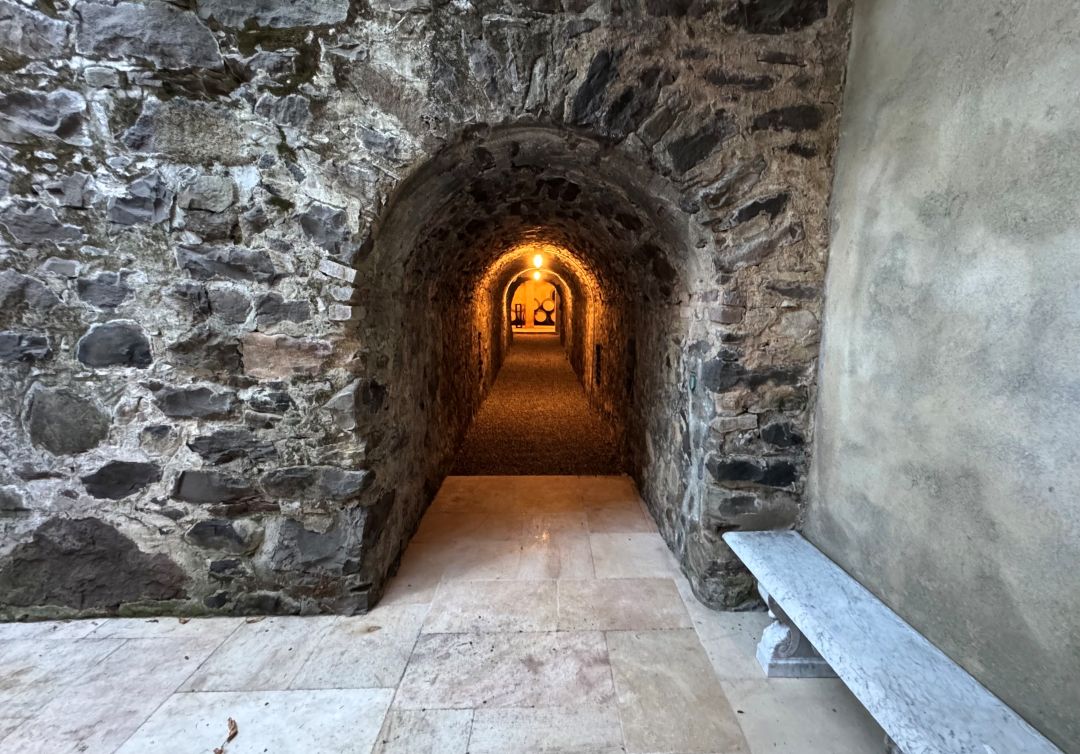
The historic El Molino winery, built in 1871.
Over time, the property fell into a state of abandonment until San Francisco artist Van Allen Haven and his wife, Nancy, acquired the property in 1943. Nancy Back Haven worked at Louis Martini Winery and was a prominent fixture in the local wine scene. Long-emptied bottles in the El Molino cellar are a reminder of the link to the family’s Martini days. The property was sold again in 1976 after Nancy Back Haven’s passing. Her nephew, Reginald (Reg) Oliver and his wife, Marie, acquired the estate and opened the next chapter in El Molino’s rich history. Reg Oliver grew up spending time on his aunt’s property but eventually left California for New York City, where he earned an MBA at NYU’s prestigious School of Commerce, Accounts and Finance (known today as the NYU Stern School of Business). He then took a job in the research department at Pershing & Co., part of investment bank Donaldson, Lufkin and Jenrette, rising to become Director of Research. Reg and Marie made frequent trips to France, especially Burgundy, where Reg continued to nurture his passion for fine wine. In 1981, the Olivers moved their young family back to St. Helena. They renovated the facility and added floors above the original cellar room, a cramped space back then and still today. During this time, Reg Oliver made a bit of wine for home consumption.
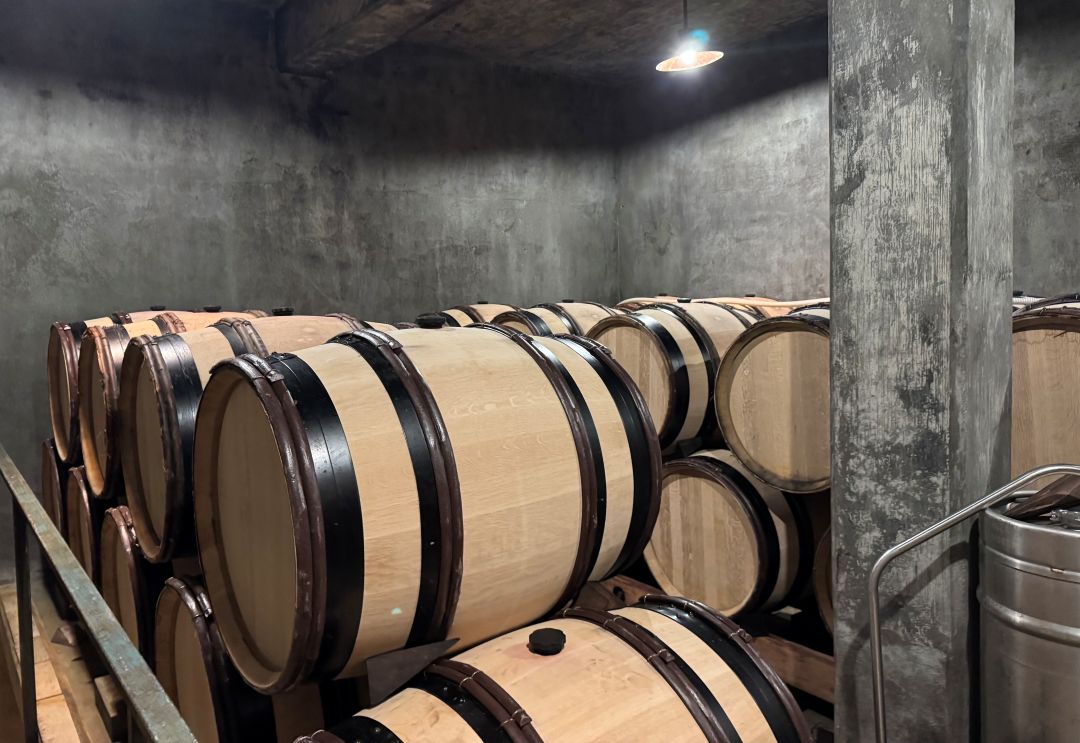
Pinot Noir ages in cramped quarters at the original El Molino winery.
Star Vineyard
In 1987, Oliver and Ric Forman bought the Star Vineyard in the heart of Rutherford. Oliver preferred to keep Star separate from El Molino, as it was a large site where most of the fruit would be (and still is) sold to outside wineries, including Forman, who sources all his Chardonnay fruit here. At the time, Star Vineyard spanned 67 acres of vineyards, 37 planted to Cabernet Sauvignon. The rest was Chardonnay planted in 1978 and 1991. Oliver ripped out some of the Cabernet Sauvignon and replaced it with Pinot Noir in 1991, unheard of at the time, even though André Tchelistcheff had made Pinots in the 1940s from the BV#1 parcel that is just across Highway 29 from Star. The Pinot Noir now spans eight acres in four blocks and is a mix of 12 different clones, including Dijon clones, classic California heritage clones (notably Swan) and a few suitcase clones David Abreu brought back from Burgundy. Abreu farmed Star until 2013 or so and lived on the property with his young family for about 20 years. Oliver applied the same detail-oriented approach that had served him so well in company research to farming and making wine. He released his first Pinot Noir in 1987. Chardonnay followed in 1988.
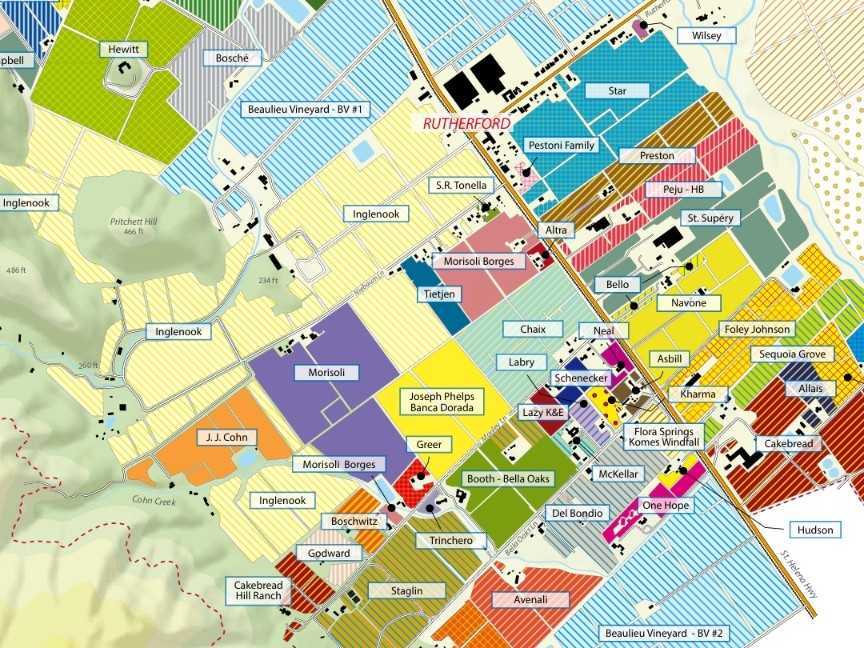
Star Vineyard (top right) and a host of other iconic properties in the heart of Rutherford. From the Vinous Maps of Napa Valley: Rutherford, by Antonio Galloni and Alessandro Masnaghetti, 2016-2025
The Next Generation
Daughter Lily Oliver Berlin grew up in New York and attended university in Los Angeles, helping with El Molino sales and marketing when time allowed. A brief stint at New York retailer Sherry-Lehman allowed her to see another side of the business. Oliver Berlin moved back to St. Helena to work alongside her father in 1997. She has worked at El Molino continuously since then, with the exception of an 18-month sabbatical she took to train service dogs, one of her many interests outside wine.
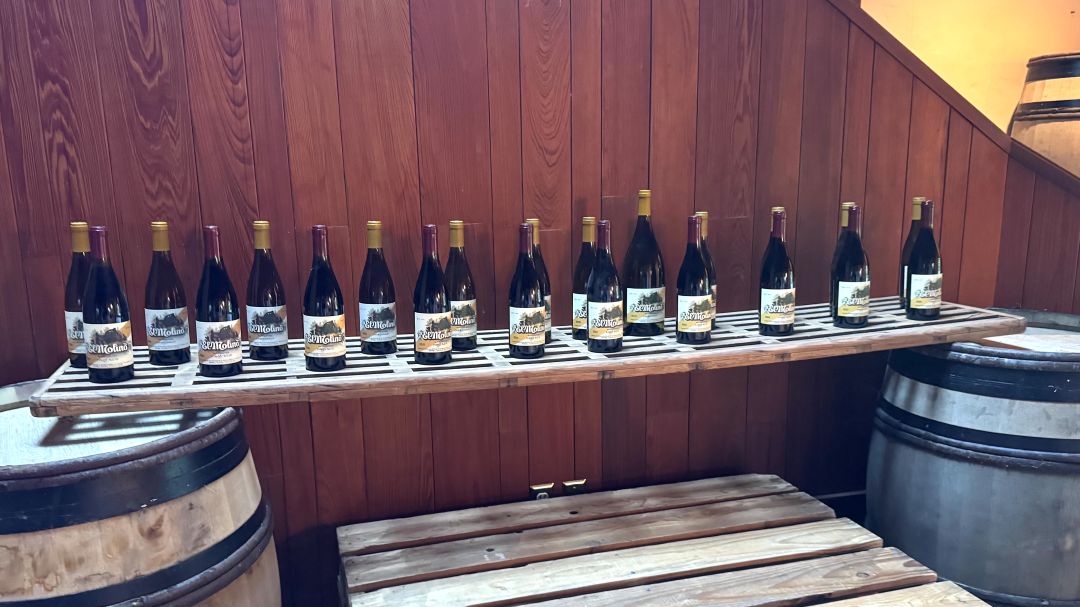
An extensive collection of El Molino wines going back three decades.
Reg Oliver passed away in 2005, just as he was hitting his stride with the wines. To say Reg Oliver lived a full life would be an understatement. He spent the last years of his life running El Molino, farming Star Vineyard, managing a boutique investment firm in St. Helena and overseeing Dry River and Te Awa Farm, two New Zealand wineries he bought with hedge fund titan Julian Robertson. Lily Oliver Berlin took over winemaking with her then husband, Jon, upon her father’s passing, and continues to make the wines today in what can only be described as a no-frills, totally minimalist, bare-bones cellar. One slight concession to modernity is the Chardonnay cellar Reg Oliver built in 1990. Other than that, El Molino remains almost frozen in time, as if it is waiting for the next generation to take charge.
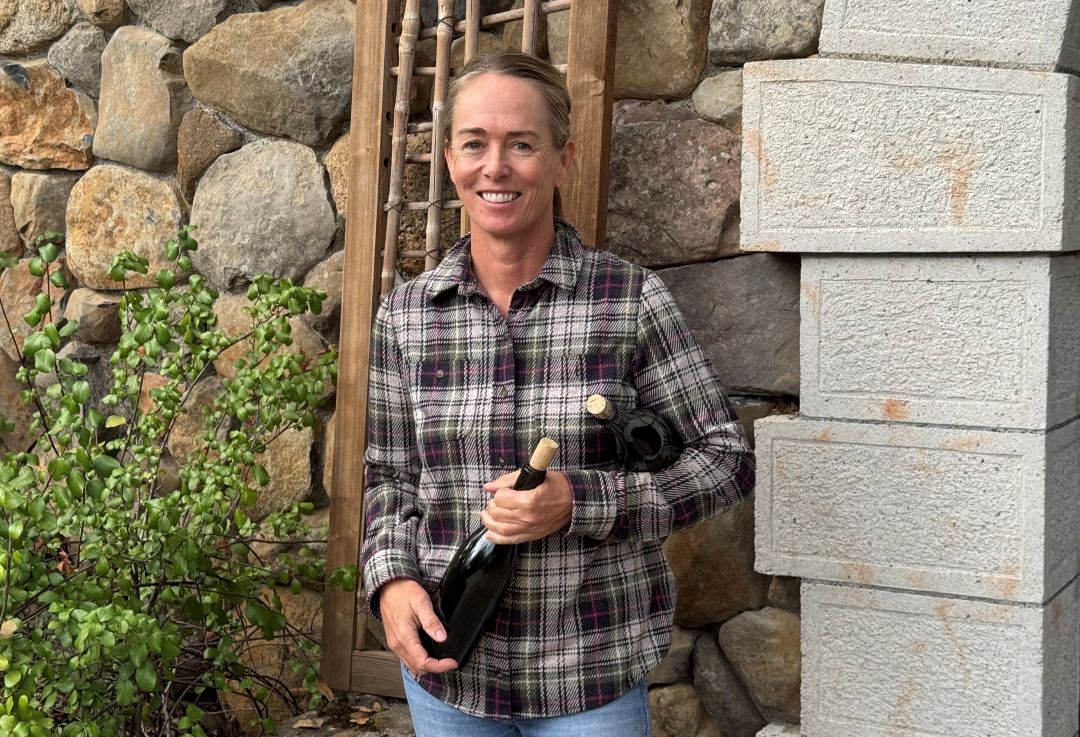
Lily Oliver Berlin continues to build on the legacy of her late father, Reg Oliver.
Timeless Chardonnays & Pinot Noirs
There are just two wines in the range. Virtually all the fruit is from Star Vineyard, as only a half-acre remains under vine at the St. Helena property. Pinot Noir ripens first, so it is harvested before the Chardonnay. Both wines are extremely transparent to vintage, making a vertical tasting like this one incredibly fascinating. El Molino’s Chardonnay is one of the most distinctive wines in all of Napa Valley. A rich, layered wine, it typically needs a few years to unwind and ages gracefully. Chardonnay is picked over the course of several days at various levels of ripeness to build complexity. The wine is fermented with a combination of ambient and spontaneous yeasts, then raised in François Frères barrels, 50% new. Most of the wood is aged for three years, although there are some made from wood that has been aged for four years. Malolactic fermentation is blocked, which yields a Chardonnay that is somewhat reticent in the early going but that blossoms with a few years in bottle. In top vintages, the Chardonnay will drink well to age 20 or so. Each year El Molino bottles a few magnums, mostly for charitable purposes. Some occasionally make it into the market. Those are very rare and special.
The Pinot Noir is ethereal and nuanced. It often reminds me of the great Napa Valley wines of the 1950s, 1960s and 1970s I have been fortunate to taste over the years. Pinot Noir is vinified along super-classic lines, with about 80% stems, foot-trodden in stainless steel vats, with no added nutrients or temperature control. Malolactic fermentation is spontaneous. The Pinot spends about 19 months in François Frères barrels, 70% new. Here, too, most of the wood is aged for three years. El Molino’s Pinot Noir is old-school Napa Valley at its finest. Readers who can find these wines should not hesitate. The El Molino Chardonnays and Pinot Noirs offer a fascinating connection to the Napa Valley of a bygone era, and yet they are timeless, beautifully contemporary wines at the same time.
© 2025, Vinous. No portion of this article may be copied, shared or redistributed without prior consent from Vinous. Doing so is not only a violation of our copyright but also threatens the survival of independent wine criticism.
You Might Also Enjoy
Napa Valley Soars: The 2023 & 2024 Cabernet Sauvignons, Antonio Galloni, November 2025
2015 Napa Valley Cabernet Sauvignon: In the Zone, Antonio Galloni, November 2025
Napa Valley’s 2022 & 2023 Cabernet Sauvignons, Antonio Galloni, December 2024
The 2021 Napa Valley Cabernets, Part One, Antonio Galloni, December 2023
Napa Valley: The Frantic 2020s & Stunning 2021s, Antonio Galloni, February 2023
The 2019 Napa Valley Cabernets: A Deep Dive, Antonio Galloni, January 2022
Napa Valley’s Thrilling 2018s & 2019s, Parts 1 & 2, Antonio Galloni, January 2021
